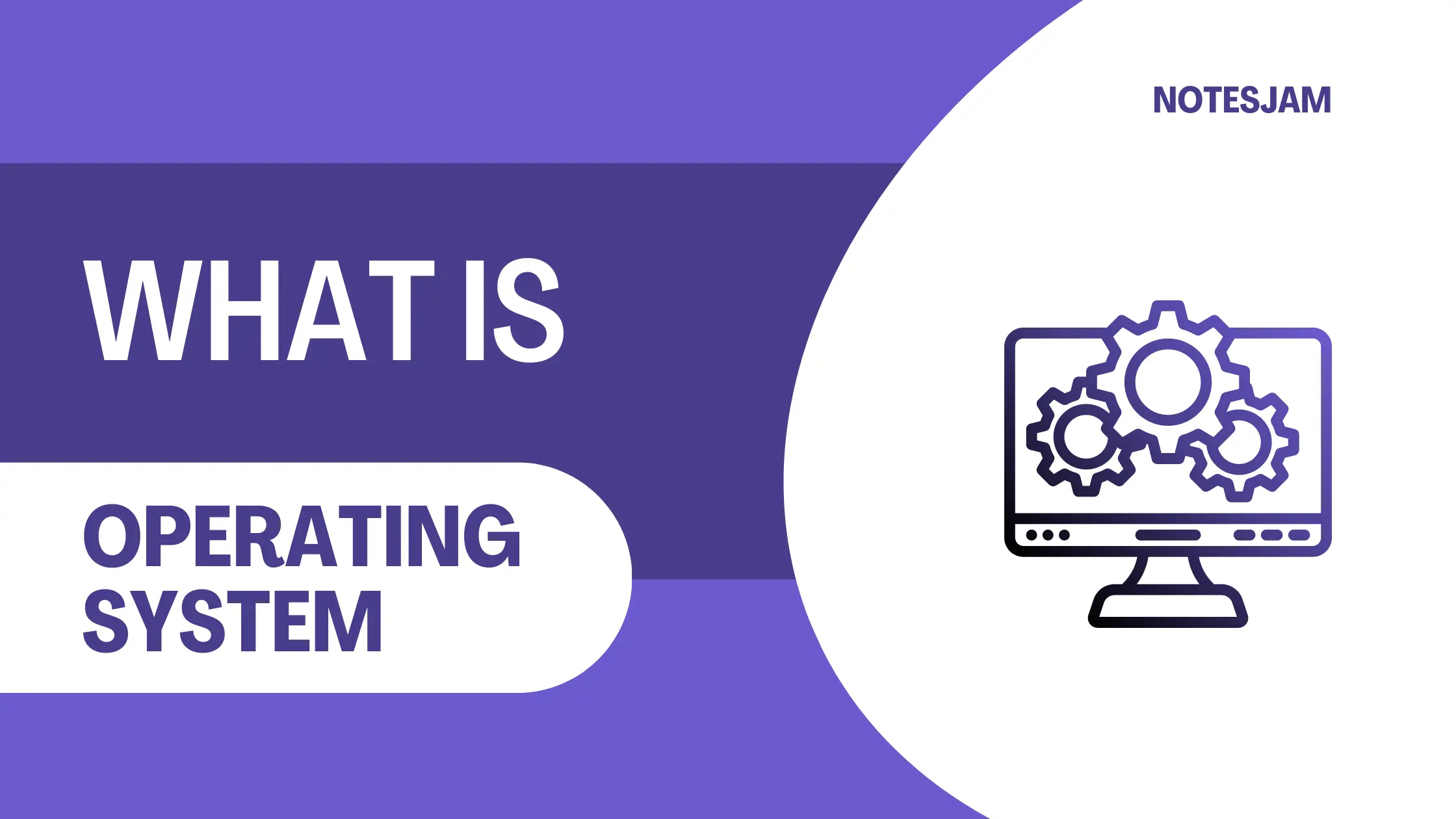Table of Content
What is an Operating System?
An operating system (OS) is a software program that manages computer hardware and software resources and provides common services for computer programs.
It acts as an interface between the hardware components of a computer system and the applications that run on it.
The operating system performs various essential tasks such as managing memory, processing tasks, managing input/output operations, and controlling access to system resources like files, printers, and networks.
Without an operating system, it would be impossible to run application programs on a computer. Some examples of operating systems include Windows, macOS, Linux, Android, and iOS.
Operating System Examples
If a user wants to copy a program from a floppy disk to a hard disk while working with DOS (Disk Operating System), they would need to type the command ‘C:Copy a:filename’ and press the enter key. This will initiate the copying process from the floppy disk to the hard disk.
When a user tries to copy a program without the assistance of an operating system, they would need to manually write a copy command program. This process can be difficult for users to accomplish.
However, an operating system can create a user-friendly environment that makes it easier for users to perform such tasks.
Microsoft Windows: One of the most popular operating systems for personal computers and laptops.
macOS: The operating system used on Apple’s Macintosh computers.
Linux: An open-source operating system that is widely used on servers, supercomputers, and embedded devices.
Android: An operating system designed for mobile devices, such as smartphones and tablets.
iOS: The operating system used on Apple’s iPhone and iPad devices.
Chrome OS: An operating system developed by Google for use on Chromebook laptops and other devices.
Unix: An operating system used on mainframe computers and servers.
Solaris: A Unix-based operating system developed by Sun Microsystems.
FreeBSD: An open-source operating system based on Unix.
IBM z/OS: An operating system designed for IBM mainframe computers.
The Operating System is Like a Government
In the next manner, the operating system is like a government, the government collects the money from various services(Public, Companies, Taxes, etc) and distributes the money to different development activities.
Same as the OS collects the resources from the network environment as to a system, and grants the resources to request jobs.
Operating System as Resource Manager
A computer has many resources(Hardware and Software), which may be required to complete a task. The commonly required resources are Input/Output devices, Memory file storage space, CPU(Central Processing Unit) time, and so on.
The operating system acts as the manager of these resources and allocates them to specific programs and users as necessary for their tasks. Therefore we can say an operating system is a resource allocator. These are the main features of an operating system.
When many computers are connected through a network more than one computer trying for a computer print or a common resource, then the operating system follows the same order and efficiently manages the resources.
Generally, resources are shared in two ways “in time” and “in space”. When a resource is a time-sharing resource, first one of the tasks gets the resource for some time, then another, and so on.
An example of resource management in an operating system is the CPU in a time-sharing system. In such a system, the OS allocates time slots for the CPU.
The first process in the ready queue gets the CPU, and when its time slot expires, the CPU switches to the next process in the queue. In this example, the CPU is a time resource that is managed by the operating system.
Another type of sharing in operating systems is space sharing. In this method, users share the space of a resource. For example, multiple processes can share the main memory at the same time. Therefore, the processes share the resource of main memory.
The main difference between time-sharing resources and space-sharing resources is that time-sharing resources are not divided into units, whereas space-sharing resources are divided into units.
Conclusion
An operating system is a collection of programs and utilities that acts as an interface between the computer and the user, creating a user-friendly environment.
One of the primary functions of an operating system is resource management. It collects all the resources available in the network environment and allocates them to requesting processes efficiently.
